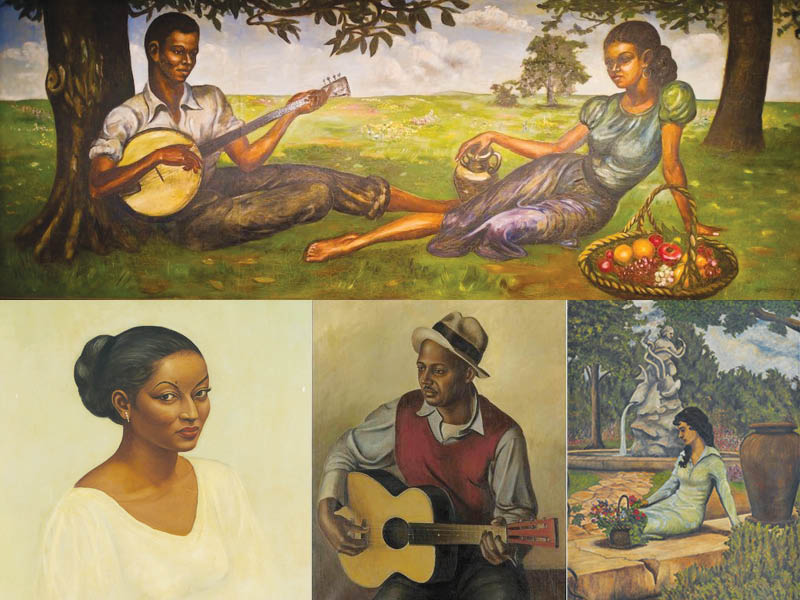Samuel Albert Countee was born in Marshall, Texas, on April 1, 1909, and eventually emerged as one of the nation’s most inspiring young artists of the 1930s.
While in Booker T. Washington Hi School in Houston, he displayed the heartfelt passion for African-American self-reliance, sensuality, and spirituality in his art.
He returned to Marshall to attend Bishop College and major in art. He paid his way through school as the portrait artist of faculty and administrators. In 1933 Bishop named him Artist in Residence. Between 1933 and 1935 he presented his work at numerous exhibits around the country, including one piece titled “Little Brown Boy,” a painting critics called a monumental achievement.
In 1934 he earned a scholarship to study at the Boston Museum of Arts.
By the late 1930s, his paintings and sculptures portraying African-American life could be seen at Howard University, Atlanta University, Smith College, Institute of Modern Art in Boston, and in the Texas Centennial in Dallas in 1936.
Countee’s work was among several murals, paintings, photographs, books, essays, reports, and studies on display at the “Hall of Negro Life.” A historic tribute to African-American culture and life in Texas as well as in the United States, the exhibit marked an important first for African Americans worldwide. It featured the works of artists, scholars, poets, physicians, military heroes, scientists, reformers, former slaves, as well as other dignitaries of influence. Countee’s exhibit particularly dramatized African-American cultural history.
Countee became a staff sergeant in World War II. In 1945, he painted a mural for Fort Leonard Wood’s WWII era African-American Officers Club to lift spirits of the soldiers. Just last year, the building was memorialized in his honor. Officially named SSG Samuel A. Countee Hall, it is more often referred to as simply Countee Hall.
While stationed at Fort Leonard Wood he also painted theater sets for USO performances- including the production of Goldbrickers of 1944.
After moving to New York City after the war, he was a popular and well-known artist. He painted portraits of famous African American artists and entertainers including Lucille Armstrong, Harry Belafonte, and Marian Anderson. He also taught art lessons to heroin addicts confined in prison.
Countee never forgot where he came from and routinely recognized his art instructors at Booker T. Washington and Bishop. Through his visual art he asked the world to reconsider existing generalizations about African Americans.
He died September 11, 1959, and is buried in Long Island National Cemetery in New York. His paintings now sell in the range of $20,000 to $85,000 and more. His work at Fort Leonard Wood is valued at more than $370,000.




